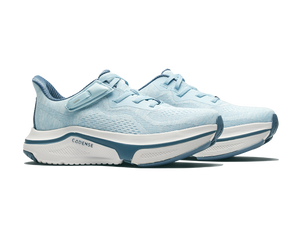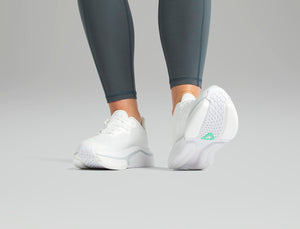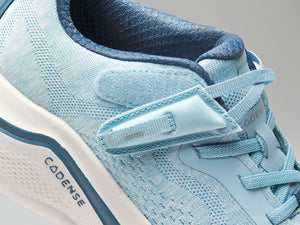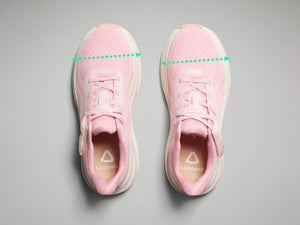Cart
Your cart is empty
Looks like you haven’t added anything yet, browse new arrivals below!
Continue ShoppingDesigned to Improve Confidence and Mobility in Parkinson’s Disease
Gentle, adaptive footwear engineered to support balance, confidence, and safer everyday mobility for individuals living with Parkinson’s disease (PD).

Medically reviewed by:
Dr. Obianuju Helen Okoye, MD


Parkinson’s disease is a progressive neurological disorder that affects movement, muscle control, and coordination. It is characterized by symptoms such as tremors, muscle rigidity, slowed movement (bradykinesia), and balance challenges.
More than 10 million people worldwide live with Parkinson’s, and gait changes often become one of the most impactful daily mobility challenges. Supportive footwear can help improve walking comfort, stability, and confidence.
The right shoes can help compensate for motor symptoms by:
When walking becomes physically and mentally demanding, footwear designed for neurological mobility challenges can make a significant difference.

Cadense adaptive footwear is designed to support individuals with mobility challenges—including those with Parkinson’s disease—by offering a combination of stability, comfort, and technology that directly addresses PD-related gait changes.

Reduces fatigue and helps support longer, more comfortable walking sessions.

Flexible uppers and adjustable closures accommodate fluctuating muscle stiffness or daily swelling.

Designed to help users glide smoothly over surfaces, reducing the chance of catching the foot during shuffling gait. This is especially beneficial for transitions between different flooring types.

Enhances balance for individuals who experience postural instability or festination.

Supports natural foot positioning and accommodates reduced toe lift.

Adjustable depth and width make pairing with orthotics or braces more comfortable.

Designed to look like modern sneakers—not medical footwear—so users can feel confident wherever they go.
When choosing shoes for Parkinson’s disease, consider:
Cadense shoes incorporate each of these features to support individuals living with PD.

Discover adaptive footwear engineered to support stability, confidence, and more comfortable movement for people living with Parkinson’s disease.
Yes — exercises like cue-based walking, stepping drills, rhythmic movement, and physical therapy routines can help improve gait initiation, stride length, and balance. Many clinicians recommend pairing these drills with supportive footwear to enhance stability.
Walking can become difficult due to bradykinesia, rigidity, freezing episodes, shuffling steps, and reduced balance. These symptoms affect stride length, toe clearance, posture, and the ability to transition between surfaces smoothly.
Certain foods may interfere with medication absorption—high-protein meals, for example, can affect the effectiveness of Levodopa. Individuals with PD should work with their healthcare provider for personalized nutrition guidance.
Parkinson’s is typically described in stages, from mild symptoms affecting one side of the body to increased motor challenges and balance impairment. Progression varies, and many individuals maintain independence for years through treatment and lifestyle support.
Life expectancy for many people with Parkinson’s is normal or near-normal, particularly when effective symptom management, exercise, and medical care are part of the treatment plan.
The best shoes offer stability, traction, adaptive fit, and lightweight construction. Features that support shuffling gait, freezing episodes, and reduced balance—such as Cadense’s variable friction technology—can help improve walking confidence and safety.
Supportive footwear can’t stop freezing episodes, but shoes with stable traction and controlled glide can make it easier to initiate steps and regain momentum when freezing occurs.
Many do. Rigidity, swelling, and orthotic use may require extra depth or wider toe boxes to ensure comfort and proper alignment during walking.
Adaptive shoes are specifically engineered for neurological gait challenges—they support smoother stepping, better stability, and more secure transitions. Standard athletic shoes are not designed to address symptoms like shuffling or freezing.
Yes. Slip-resistant soles help reduce falls, especially since balance changes and short-step gait patterns increase instability. Traction is a key component of safer mobility.
Yes — many users comfortably pair Cadense shoes with orthotics thanks to adjustable depth, wide bases, and supportive structure.
Absolutely. Shoes that support stability, reduce stumbling, and encourage smoother steps can significantly improve confidence and reduce fear of falling—especially during freezing or shuffling episodes.
Looks like you haven’t added anything yet, browse new arrivals below!
Continue Shopping